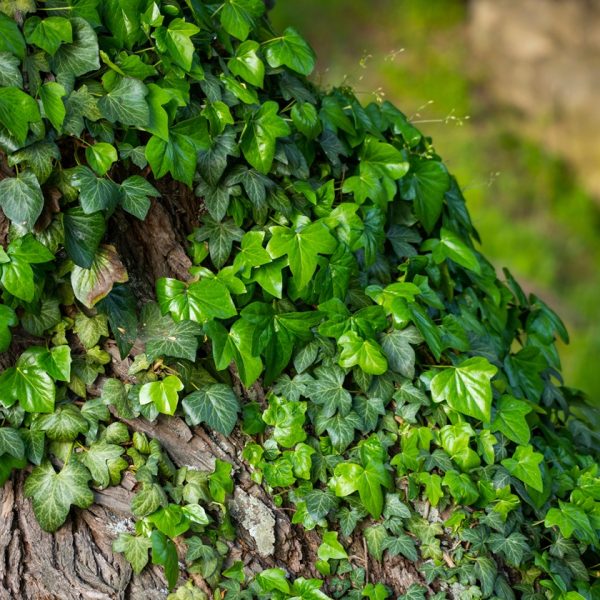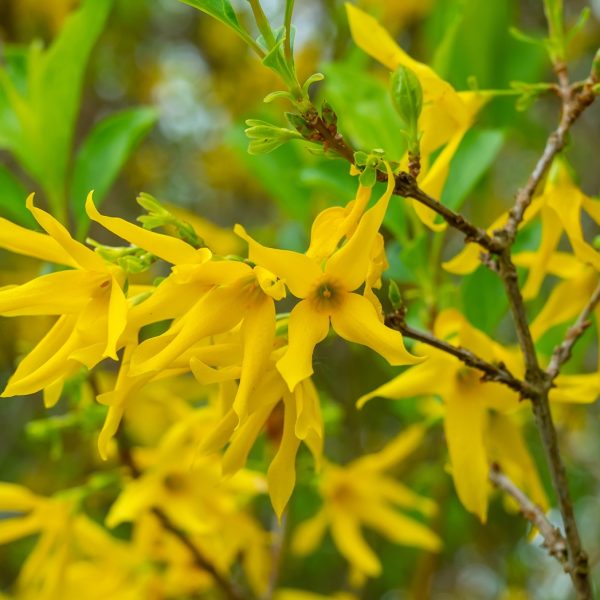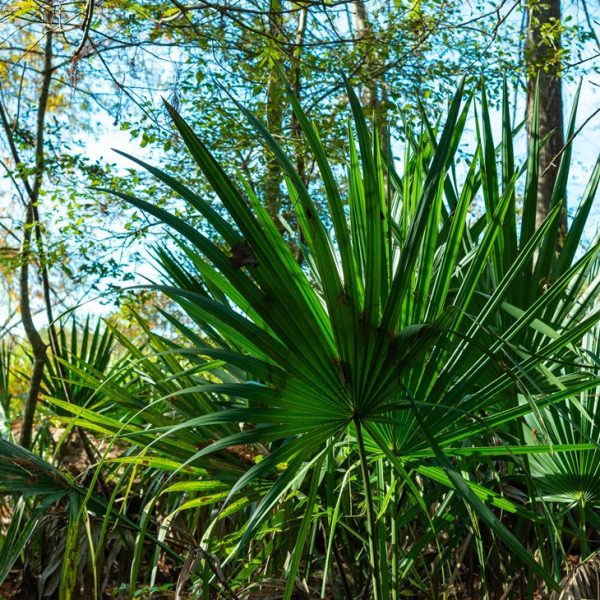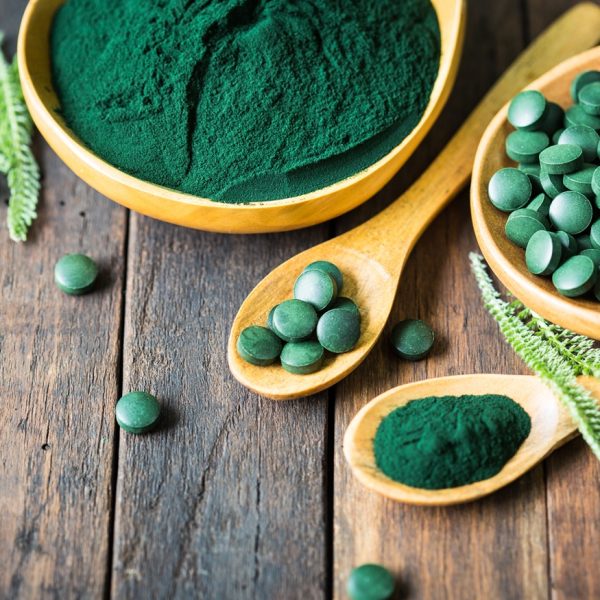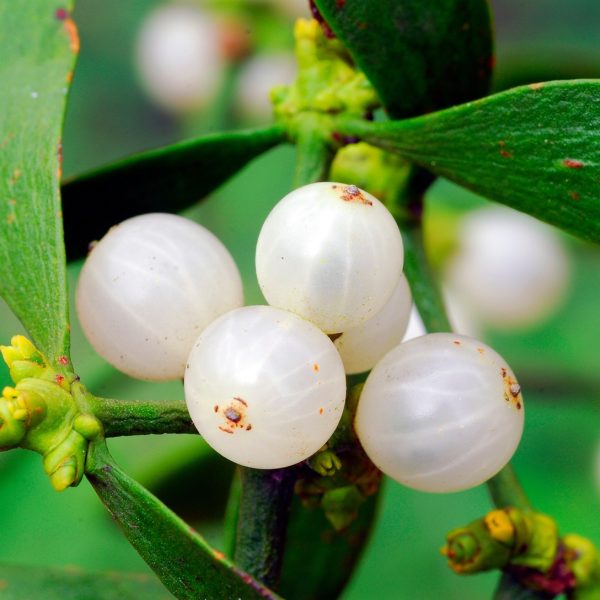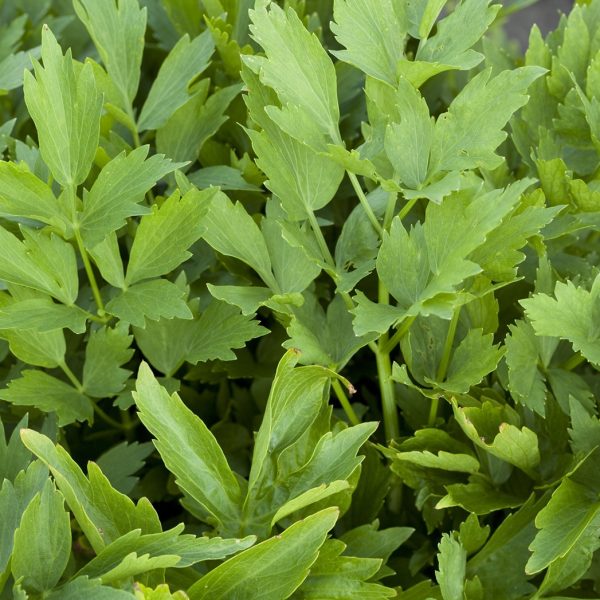-
How does it feel?
Eaten raw, lovage leaf has a strong aromatic flavour which is slightly bitter, similar to celery leaf but more intense and peppery. An infusion of the leaf smells sharp and aromatic, very much like fresh celery leaves but with a hint of aniseed. The taste is much milder than expected from the aroma, due to the volatile oils carried by the steam. The taste is salty, sour, pungent, slightly bitter and subtly sweet.
The pungent and salty tastes linger in the mouth due to the volatile oils coating the tongue and leaving a slightly acrid sensation in the throat. Relaxation can be felt throughout the body within a few minutes, as the effect of the herb moves down through the system. It feels grounding and calming, perfect after a meal to encourage the optimal state required for digestion.
-
What can I use it for?

Lovage (Levisticum officinale) Lovage was traditionally a popular remedy, used for centuries in folk medicine; however, it has lost favour in recent years. It is easy to grow and the leaf, seed and root can all be used medicinally for the urinary and digestive systems. Lovage is used as a remedy for the digestive system and can be used to settle the stomach and relieve colicky trapped wind and flatulence. The seeds are primarily used for gastric discomfort, while the leaf and root are more suited to urinary issues due to their diuretic properties.
The diuretic action of lovage encourages the elimination of fluid through the kidneys and reduces water retention (1). This makes lovage a versatile herb to be used in cases where water retention stems from an issue with the cardiovascular system, by helping to remove excess fluid that has accumulated in the tissues. Similarly, lovage can be used in rheumatic issues such as arthritis and gout to support the elimination of waste through the kidneys, and prevent the build up of metabolites in the joints.
The antispasmodic action of lovage, which accounts for many of its effects on the digestive system, also extends to other smooth muscle. Lovage can be used to relax the uterine tissue and relieve menstrual cramps. It also has strong antiseptic properties and can be used as a skin cleanser or to treat minor wounds, pimples and boils.
Lovage is a culinary herb grown mainly for its leaves, which taste like celery (Apium graveolens), albeit sweeter and with a slight hint of parsley and aniseed (2). The leaves can be used fresh, finely chopped in salads, soups and stews, or blanched as a vegetable in a similar way to spinach (2,3). The young stems can also be eaten like celery either raw or cooked. The flavour becomes bitter once the plant starts to flower, however removing the flower stalk will prolong the harvest (3). The seeds can be used in baking, soups and stews in a similar way to fennel and celery seeds (2,3). The seeds can be crushed and added to bread and pastry recipes, or sprinkled on salads or cooked dishes (2).
-
Into the heart of lovage

Lovage (Levisticum officinale) It is the high concentration of volatile oils in lovage which give it the strong, aromatic smell. Up to 64–80% of the oil consists of phthalides, which are mainly responsible for the characteristic celery-like odour (4,5). A further furanone derivative (sotolone) also contributes to the intense odour and aromatic flavour (4). It is these essential oils which are responsible for the antibacterial activity against both gram-positive and gram-negative bacteria, demonstrated in several in vitro studies (4). Lovage extract has been shown to provide synergistic antibacterial activity with pharmaceutical antibiotics, providing a greater antibacterial inhibition than isolated antibiotic therapies (6).
The phthalide constituent ligustilide has antispasmodic activity which has been demonstrated through in vitro animal models. Several studies have demonstrated vasorelaxant effects of ligustilide on the cardiovascular vessels, and myorelaxation of smooth muscles (4). This spasmolytic action on the smooth muscle of the intestines accounts for the carminative action to relieve spasms, cramps, indigestion and colicky flatulence pains. Isolated ligustilide has also been shown to inhibit spontaneous periodic contractions of isolated uterine tissue in animal models, providing a mechanism for the indication for lovage for dysmenorrhea (7).
Energetically, lovage is slightly warming, and drying due to the diuretic action (8). As a flower essence, lovage is associated with heart chakra activation, making it a choice for those seeking emotional healing or deeper interpersonal connections. It can be used to support emotional clarity, heart-centred communication, energetic balance, enhance vitality, clear emotional blockages, and promote a sense of grounded confidence.
-
Traditional uses

Lovage (Levisticum officinale) Lovage was used by the ancient Greeks who chewed the seeds to aid digestion and relieve flatulence (2). In Europe, a decoction of lovage was thought to be a good aphrodisiac, and in the Middle Ages lovage leaves were laid in the shoes of travellers due to the deodorising and antiseptic effects (2). The leaves were also used as a compress for boils, or applied to spots on the skin (9). Since the 11th Century, there have been reports of cosmetic use as a skin lightener and to remove blemishes and freckles (4).
Culpeper’s 1653 Complete Herbal reported lovage to be effective to warm a cold stomach, aid digestion, ease griping, dissolve wind, and improve resistance to poisoning and infection (10). Both the root and seed were taken in wine or as a decoction, while the distilled water was used as a gargle for quinsy (an infected abscess on the tonsils) or dropped into the eyes to remove redness and dimness (10).
In 1812, John Hill advocated the fresh root as a diuretic to “work by urine”, as well as being efficacious against jaundice and fever, and the seeds were used to dispel wind (11). In 1898, lovage was described in the King’s American Dispensatory as a gastric stimulant, diuretic, emmenagogue, and carminative, closely resembling angelica (Angelica archangelica) in its action and uses (12). The root and seeds were considered the medicinal parts, best taken as an infusion (12).
In the early 20th century, the drink Lovage was an English pub favourite, made from lovage seed, bandy and sugar (9). It was considered a warming drink for a cold stomach and used to ease stomach pains, improve appetite and support digestion (9). Lovage leaf and stems were eaten as food and used as a culinary herb in cooking as well as the manufacture of confectionery due to the sweet and aromatic taste (13). The seed was also used as an alternative to the more expensive black pepper to season savoury foods (9).
-
Traditional actions
Herbal actions describe therapeutic changes that occur in the body in response to taking a herb. These actions are used to express how a herb physiologically influences cells, tissues, organs or systems. Clinical observations are traditionally what have defined these actions: an increase in urine output, diuretic; improved wound healing, vulnerary; or a reduction in fever, antipyretic. These descriptors too have become a means to group herbs by their effects on the body — herbs with a nervine action have become the nervines, herbs with a bitter action are the bitters. Recognising herbs as members of these groups provides a preliminary familiarity with their mechanisms from which to then develop an understanding of their affinities and nuance and discern their clinical significance.
-
Traditional energetic actions
Herbal energetics are the descriptions Herbalists have given to plants, mushrooms, lichens, foods, and some minerals based on the direct experience of how they taste, feel, and work in the body. All traditional health systems use these principles to explain how the environment we live in and absorb, impacts our health. Find out more about traditional energetic actions in our article “An introduction to herbal energetics“.
-
What practitioners say
 Digestive system
Digestive systemLovage is a warming digestive tonic which supports digestion and can relieve heartburn, indigestion,dyspepsia and a loss of appetite (8,14). The volatile oils have a carminative action in the gastrointestinal tract, relaxing intestinal spasms which can cause cramps and flatulent colicky pain (8). Lovage is therefore indicated for chronic sluggish digestion and metabolism, as a tonic for the digestive system during convalescence, as well as acute relief from dyspepsia, indigestion and feelings of fullness (4,15). Lovage, when prepared as an infusion or tincture combines well with aniseed (Pimpinella anisum), fennel (Foeniculum vulgare), and cardamon (Elettaria cardamomum) to support digestion after a meal.
Urinary system
Due to the high concentration of mineral salts, lovage has a strong diuretic action, working in a similar way to celery seed and parsley leaf (Petroselinum crispum) (1). Increasing the amount of urine encourages the excretion of waste through the urinary tract, and lovage, therefore, can be used for urinary tract infections (UTIs) and minor urinary complaints such as urinary retention (8,16). The combination of the anti-inflammatory, antibacterial and diuretic actions suit lovage to bacterial and inflammatory ailments in the urinary tract.
Both the seed and root preparations can be used for inflammation of the lower urinary tract and to prevent and treat renal gravel (17,18). In cases of renal gravel or kidney stones, lovage is a useful herb as a herbal infusion, combining well with marshmallow leaf (Althaea officinalis) and corn silk (Zea mays) to further soothe the irritation. Caution should be noted for chronic kidney pathologies due to the potential for the volatile oils to further irritate the delicate kidney (see safety section). Migraine headaches can sometimes stem from stagnation in the kidney, and in cases of deficient kidney activity lovage may be effective (8).
Cardiovascular system
The strong diuretic action of lovage promotes the elimination of fluids via the kidneys which can help with oedema stemming from the cardiovascular system (8). Lovage also has a vasorelaxant effect on the vasculature, making it a useful addition for remedies suited to support the cardiovascular system.
Musculoskeletal
Diuretic herbs support the kidney in the elimination of metabolic waste, toxins and by-products of inflammation (19). This indicates lovage for rheumatic conditions where a build up of metabolites in the blood and joints can exacerbate symptoms. Lithuria is a medical condition characterised by an excess of uric acid or its salts in the urine and can be associated with conditions like gout. Lovage supports the elimination of uric acid through the kidneys, indicating it for use combined with other remedies for gouty arthritis such as celery seed and nettle (Urtica dioica).
 Reproductive system
Reproductive systemLovage is an emmenagogue and uterine tonic, which can be used to stimulate menstruation in cases of amenorrhea and delayed menses (9,18). It can be helpful for dysmenorrhea, especially when this is due to congestion in the pelvic tissues. The pain associated with dysmenorrhea can be caused by hypercontractility of the uterine muscle, a reduction in blood flow, and subsequent uterine ischemia (7). Lovage can reduce the hypercontractility of the uterine muscle, relax the uterus, and support an increase in uterine blood flow (7).
Immune and respiratory systems
Lovage has a mild expectorant and anti-catarrhal action, indicating its use for mucus stuck in the lungs and respiratory tracts (14). The volatile oils promote the breakdown of thick mucus and catarrh so it can be more easily expelled (15). Lovage also has a mild diaphoretic action, promoting sweating and helping to break a fever (14).
Traditionally, lovage infusion was used as a gargle for tonsillitis and can be used in this way for the soothing anti-inflammatory effect, and the antimicrobial action directly to the infected area. For the same reason, it can also be used as a mouthwash for ulcers and mild mouth infections (8). Lovage can be used alongside antibiotic therapies, as the antimicrobial action enhances effectiveness of the antibiotics, and may be protective against antibiotic resistance (6).
-
Research

Lovage (Levisticum officinale) There are no clinical trials investigating the use of lovage as a single ingredient, although it has appeared in research using combined herbal formulas. Combination products make it impossible to distinguish the effect of the lovage from the other herbs, requiring caution when interpreting the findings. Due to the lack of clinical evidence, the indications for use are based on traditional use, in vitro research to determine the plant constituents, and the known actions of the constituents.
Effect of the herbal combination Canephron N on diabetic nephropathy in patients with diabetes mellitus: results of a comparative cohort study
This study involved 59 patients with diabetic nephropathy (DN), divided into two groups to receive either standard antidiabetic therapy (control) or standard therapy plus a herbal supplement (Canephron) for six months. In the treatment group, two tablets of Canephron were taken three times a day, each containing centaury herb (18 mg), lovage root (18 mg) and rosemary leaf (18 mg). Compared to baseline, the herbal treatment group had a reduction in microalbuminuria (73%), albumin to creatinine ratio (46%), total cholesterol (25%), triglycerides (43%), and increased high-density lipoprotein (HDL).
These improvements were all greater than those observed for patients treated with antidiabetic medications alone, with only microalbuminuria reaching a statistical significance difference. The authors concluded that the positive effect on albumin filtration, antioxidant defence status, and lipid peroxidation levels encourages use of this herbal combination as an add-on therapy in patients with DN (20).
Postoperative prevention of urinary tract infections in patients after urogynecological surgeries—non-antibiotic herbal (Canephron) versus antibiotic prophylaxis (Fosfomycin Trometamol): A parallel-group, randomised, noninferiority experimental trial
Another study used the same combination product (Canephron) containing century, lovage root, and rosemary in comparison to antibiotic treatment (fosfomycin trometamol) as prophylaxis against postoperative urinary tract infections (UTIs). Before undergoing urogynecological surgery, 125 female patients were randomised into a control group (n = 67) receiving the antibiotic (3 g of FT), or the treatment group (n = 58), administered Canephron (three times a day for 14 days), started the day after the procedure. UTIs were observed in 6.4% of all the patients, with no statistically significant difference between the incidence in the FT and Canephron groups.
The authors concluded that Canephron is comparable to standard antibiotic treatment for the prevention of postoperative UTIs. This herbal remedy therefore has potential use to decrease the prophylactic antibiotic use following urogynecological surgery which is closely connected to the growing trend of antibiotic resistance (21).
Medicinal plant extracts with efflux inhibitory activity against gram-negative bacteria
In this in vitro study, lovage was one of 21 plants tested for activity against gram negative enterobacteriaceae (Salmonella spp.) and pseudomonas aeruginosa. The methanolic extract of lovage (10 g) was found to be the most active of the 84 extracts from the 21 plants. The lovage extract was combined with five different antibiotics (ciprofloxacin, tetracycline, chloramphenicol, erythromycin and ethidium bromide) to determine the synergistic activity against several Salmonella typhimurium isolates with and without innate efflux pump multidrug resistance AcrAB-TolC. Bioassay for each antibiotic was carried out in the absence or presence of the lovage extract, on agar plates.
The inhibition of bacterial growth was greater for the ciprofloxacin plus plant extract than the antibiotic alone. This suggests a synergy between the antibiotic and the lovage extract; however, this was only observed for the bacteria without the drug resistance efflux pumps. This suggests that lovage could provide synergistic antibacterial activity when combined with antibiotic therapies (6).
-
Did you know?
The name comes from the Latin ligusticum, after Liguria, a region in Italy where the herb grew profusely (2).
Additional information
-
Botanical description
Lovage is a hairless, deciduous perennial which grows to a height of two metres and spreads to between 0.5–1 metre wide (3). The thick, erect, hollow stem branches into erect stalks of dark green leaves (28). The aromatic, shiny leaves are tripinnate, deeply divided into multiple triangular-rhomboidal leaflets, with sharp points and slightly serrated edges (3).
The yellow-green flowers appear in umbels in the summer (3).
The seeds develop in autumn and are ovate-oblong, or elliptical, small, compressed and curved (12). The seeds are strongly marked with ribs which are winged, and in the grooves between the ribs occur one or more oil-tubes (12).
-
Common names
- Bladderseed
- Love parsley
- Sea parsley
- Lavose
- Liveche
- Old English lovage
- European lovage
- Mountain celery
- Maggi-herb
-
Safety
Lovage is safe to consume as a culinary herb.
Caution is required when the raw plant or essential oil is applied to the skin due a risk of skin irritation, and a photosensitising effect which increases the risk of UV damage and hyperpigmentation lasting several weeks (22,23,24).
Avoid lovage in pregnancy, especially the early stages, due to the emmenagogue action as a uterine stimulant (9,25). Due to insufficient reliable information available, avoid use during lactation and only consume when breast-feeding under the guidance of a medical practitioner (16,24,25).
-
Interactions
None known (16,17).
Theoretically, lovage root might interfere with diuretic therapy due to its aquaretic effects which will further increase water excretion by the kidneys (24).
There is a theoretical risk for interaction with anticoagulant medications such as warfarin, since lovage contains coumarins which can be transformed into the anticoagulant dicoumarol by moulding (4). For this reason, lovage should be discontinued in advance of patients undergoing surgery (4).
-
Contraindications
Lovage should not be consumed in kidney disorders such as kidney insufficiency, acute kidney inflammation or urinary tract inflammation due to the irritating effect of the volatile oils to potentially aggravate kidney damage (17,19,24,25).
Caution is required with UV exposure while taking lovage internally or applying to the skin, due to the potential for the furocoumarins to enhance photosensitivity (17,24,25).
The essential oils in lovage can cause contact dermatitis, caution is warranted in individuals prone to skin sensitivity and contact dermatitis (23).
-
Preparations
- Infusion
- Tincture
- Culinary uses
-
Dosage
- Tincture (1:3 | 45%): 1–3 ml, three times per day (18)
- Fluid extract (1:1 | 45%): 0.5–2 ml, up to three times per day (18)
- Infusion/decoction: 2–3 g in 150 ml water, two to three times per day (1,16). Up to 4–9 g dried root per day (16,17)
-
Plant parts used
- Root
- Leaves
- Seeds
- Young stems
-
Constituents
- Volatile oil (0.2 – 2%)*: Over 190 volatiles, largely monoterpenes, phthalides and sotolone (3-hydroxy-4,5-dimethyl-2(5H)-furanone) (4,24)
- Monoterpenes: α-terpinyl, α-pinen, camphene, β-pinene, myrcene, α-phellandrene, α-terpinene, limonene, β-phellandrene, terpinolene, pentylcyclohexadiene, pentylbenzene, (4,5)
- Phthalides: Ligustilide, 3n-butylidenephtalide and senkyunolides (4,5,24)
- Terpenoids: Phytol, linoleic acid, stigmasterol, β-sitosterol and falcarinol (5,24)
- Coumarins: Umbelliferone, angelicin, scopoletin, furocoumarins (psoralen and bergapten) (4,24)
- Phenylpropanoids: Chlorogenic, caffeic and ferulic acids (4)
* The concentration of the essential oil in the different parts of the plant depends on the time of harvesting. Harvesting the leaves throughout the summer significantly decreases the accumulation of essential oil in the roots, whereas keeping the above ground parts until autumn significantly increases the amount of essential oil in the root (26).

-
Habitat
The native range of lovage spans from Iran to Afghanistan (28). It has been introduced, and is largely naturalised, across Europe, UK and parts of North America, and Australia, growing primarily in the temperate biome (2,28). It has been grown in gardens since medieval times, and was first recorded from the wild in 1836 (30).
-
Sustainability

Not currently on risk lists but complete data may be missing on the status of the species. Read more in our sustainability guide. Lovage does not have a globally recognised conservation status ranking or appear on any regional red lists (30,31,33). Lovage is not listed under the U.S. Endangered Species Act or by the Committee on the Status of Endangered Wildlife in Canada (COSEWIC), and does not appear on the United Plant Savers list of threatened species (33,34). Distribution across Britain and Ireland has been increasing since 2000 (29).
Lovage is not listed by the Convention on International Trade in Endangered Species of Wild Fauna and Flora (CITES), with no legislation regarding trade of the species (32).
Habitat loss and over-harvesting from the wild are two of the biggest threats faced by medicinal plant species. There are an increasing number of well-known herbal medicines at risk of extinction. We must, therefore, ensure that we source our medicines with sustainability in mind.
The herb supplement industry is growing at a rapid rate and until recent years a vast majority of medicinal plant produce in global trade was of unknown origin. There are some very real and urgent issues surrounding sustainability in the herb industry. These include environmental factors that affect the medicinal viability of herbs, the safety of the habitats that they are taken from, as well as the welfare of workers in the trade.
The botanical supply chain efforts for improved visibility (transparency and traceability) into verifiably sustainable production sites around the world is now certificated through the emergence of credible international voluntary sustainability standards (VSS).
Read our article on Herbal quality & safety: What to know before you buy and Sustainable sourcing of herbs to learn more about what to look for and questions to ask suppliers about sustainability.
-
Quality control
Herbal medicines are often very safe to take; however, their safety and efficacy can be jeopardised by quality issues. So, it is important to buy herbal medicines from a reputable supplier, from sources known to test their herbs to ensure there is no contamination, adulteration or substitution with incorrect plant matter, as well as ensuring that recognised marker compounds are at appropriate levels in the herbs.
Some important quality assurances to look for are certified organic labelling, the correct scientific/botanical name, and the availability of information from the supplier about ingredient origins. A supplier should be able to tell you where the herbs have come from, what contaminants are not in the herb, and what the primary compounds are.
-
How to grow
Lovage is easy to grow and can be propagated by division in spring, or grown from seed (2,3). Sow seeds indoors in early spring, or directly outdoors in late spring/early summer (3). It will tolerate most soils but prefers deep, fertile, moist but well-drained soil in full sun (3). Lovage is perennial and will die down in late autumn then re-sprout from the base every spring (3). Lovage will grow to its full height (2 meters) within 3–5 years (2). Harvesting the young leaves regularly through the spring and summer will encourage fresh new growth (3). Lovage will self-seed prolifically, so remove the seeds in autumn to prevent large clumps developing.
-
Recipe

Lovage (Levisticum officinale) Lovage soup (2)
Ingredients
- 25 g butter
- 2 onions — finely chopped
- 500 g potatoes — peeled and diced
- 4 tablespoons lovage leaves — finely chopped
- 850 ml stock
- 300 ml milk or cream
- 1 teaspoon grated nutmeg
- Salt and pepper to taste
Method
- Melt the butter in a pan and gently sauté the onions and diced potatoes until soft.
- Add the chopped lovage leaves and cook for one minute.
- Add the stock and bring to the boil, season with salt and pepper and leave to simmer for 15 minutes.
- Puree through a liquidiser before blending in the milk or cream, and adding the nutmeg.
- Serve hot or cold and garnish with chopped lovage leaves.
-
References
- Yarnell E. Botanical medicines for the urinary tract. World J Urol. 2002;20(5):285-93. https://doi.org/10.1007/s00345-002-0293-0
- McVicar, J. Jekka’s Complete Herb Book. Kyle Cathie Limited; 2009.
- Royal Horticultural Society. Levisticum officinale: lovage. Accessed May 27, 2025. https://www.rhs.org.uk/plants/10030/levisticum-officinale/details
- European Medicines Agency (EMA). Assessment report on Levisticum officinale Koch, radix; 2012. Accessed: May 28, 2025. Available from: https://www.ema.europa.eu/en/medicines/herbal/levistici-radix
- Daukšas E, Venskutonis PR, Sivik B, Nillson T. Effect of fast CO2 pressure changes on the yield of lovage (Levisticum officinale Koch.) and celery (Apium graveolens L.) extracts. The Journal of supercritical fluids. 2002;22(3):201-10. https://doi.org/10.1016/S0896-8446(01)00115-2
- Garvey MI, Rahman MM, Gibbons S, Piddock LJ. Medicinal plant extracts with efflux inhibitory activity against Gram-negative bacteria. International journal of antimicrobial agents. 2011;1;37(2):145-51. https://doi.org/10.1016/j.ijantimicag.2010.10.027
- Du J, Bai B, Kuang X, Yu Y, Wang C, Ke Y, Xu Y, Tzang AH, Qian ZM. Ligustilide inhibits spontaneous and agonists-or K+ depolarization-induced contraction of rat uterus. Journal of ethnopharmacology. 2006;108(1):54-8. https://doi.org/10.1016/j.jep.2006.04.011
- Wood M. The Earthwise Herbal Volume 1: A Complete Guide to New World Medicinal Plants. North Atlantic Books; 2008.
- Burton-Seal J. and Seal, M. The Herbalist Bible: John Parkinson’s Lost Classic Rediscovered. Merlin Unwin Books; 2014.
- Culpeper N. Culpepers’ Complete Herbal: a book of natural remedies for ancient ills [1653]. Wordworth Reference; 1995.
- Hill J. The Family Herbal; 1812. Reprinted on Henritttas Herbpages. Accessed May 27, 2025. https://www.henriettes-herb.com/eclectic/hill/lovage.html
- Felter HW, Lloyd JU. Kings American Dispensary; 18th Edit; 1898. Reprinted on Henritttas Herbpages. Accessed May 27, 2025. https://www.henriettes-herb.com/eclectic/kings/angelica-arch.html
- Hedrick UP. Sturtevant’s Edible Plants of the World, 1919. Reprinted on Henritttas Herbpages. Accessed May 27, 2025. https://www.henriettes-herb.com/eclectic/sturtevant/levisticum.html
- Ody, P. The Herbal Society’s Complete Medicinal Herbal. Dorking Kindersley; 1995.
- Bone K and Mills S. Principles and Practice of Phytotherapy: Modern Herbal Medicine. Elsevier Health Sciences; 2013.
- Committee on Herbal Medicine Products (HMPC). Community herbal monograph on Levisticum officinale Koch, radix; 2012. Accessed: May 28, 2025. Available from: https://www.ema.europa.eu/en/medicines/herbal/levistici-radix
- Blumenthal M, Busse WR. Lovage root. In: The Complete German Commission E Monographs: Therapeutic Guide to Herbal Medicines. American Botanical Council; 1999. Accessed May 27, 2025. https://www.herbalgram.org/resources/commission-e-monographs/monograph-approved-herbs/lovage-root
- Bradley P. Lovage root (Levistici radix). British Herbal Compendium. Vol 2. BHMA. 2006, 258-261.
- Hoffmann D. Medicinal Herbalism, The Science and Practice of Herbal Medicine. Healing Arts Press; 2003.
- Martynyuk L, Martynyuk L, Ruzhitska O, Martynyuk O. Effect of the herbal combination Canephron N on diabetic nephropathy in patients with diabetes mellitus: Results of a comparative cohort study. The journal of alternative and complementary medicine. 2014;20(6):472-8. https://doi.org/10.1089/acm.2013.0400
- Wawrysiuk S, Rechberger T, Kubik-Komar A, Kolodynska A, Naber K, Miotla P. Postoperative Prevention of Urinary Tract Infections in Patients after Urogynecological Surgeries—Nonantibiotic Herbal (Canephron) versus Antibiotic Prophylaxis (Fosfomycin Trometamol): A Parallel-Group, Randomized, Noninferiority Experimental Trial. Pathogens. 2022 Dec 23;12(1):27. https://doi.org/10.3390/pathogens12010027
- Ashwood-Smith MJ, Ceska O, Yeoman A, eKenny PG. Photosensitivity from harvesting lovage (Levisticum officinale). Contact Dermatitis. 1992;26(5):356-357. https://doi.org/10.1111/j.1600-0536.1992.tb00138.x
- Lapeere H, Boone B, Verhaeghe E, Ongenae K, Lambert J. Contact dermatitis caused by lovage (Levisticum officinalis) essential oil. Contact Dermatitis. 2013;69(3):181-2. https://doi.org/10.1111/cod.12082
- Natural Medicines Professional Database. Therapeutic Research Centre. Lovage Professional Monograph. Published August 22, 2022. Accessed May 27, 2025. https://naturalmedicines.therapeuticresearch.com/
- Brinker, FJ. Herbal Contraindications & Drug Interactions: Plus Herbal Adjuncts with Medicines. Eclectic Medical Publications, 2010.
- Andruszczak S. The effect of the method of plantation establishment and harvesting time on some morphological features of plants and essential oil content in lovage roots (Levisticum officinale Koch.). Acta Scientiarum Polonorum Hortorum Cultus. 2007;6(1):21-7. https://czasopisma.up.lublin.pl/asphc/article/view/3742
- Grieve M, Leyel CF, Marshall M. A Modern Herbal. the Medicinal, Culinary, Cosmetic and Economic Properties, Cultivation and Folk-Lore of Herbs, Grasses, Fungi, Shrubs & Trees with All Their Modern Scientific Uses. Dover Publications; 1982.
- Royal Botanical Gardens Kew (RBGK). Levisticum officinale W.D.J.Koch. Plants of the Word Online (POWO). Accessed May 27, 2025. https://powo.science.kew.org/taxon/urn:lsid:ipni.org:names:844187-1
- Southam M and Mountford JO. Lovage Levisticum officinale W.D.J.Koch. BSBI Online Plant Atlas. Published 2020. Accessed May 27, 2025. https://plantatlas2020.org/atlas/2cd4p9h.e2n
- IUCN. IUCN red list of threatened species. Accessed May 27, 2025. https://www.iucnredlist.org/search
- Cheffings C, Farrell L, (eds), Dines, T.D., Jones, R.A., Leach, S.J., McKean, D.R., Pearman, D.A., Preston, C.D., Rumsey, F.J., Taylor, I. The Vascular Plant Red Data List for Great Britain. Species Status No. 7. Joint National Conservation Committee. 2005. Accessed May 27, 2025. https://hub.jncc.gov.uk/assets/cc1e96f8-b105-4dd0-bd87-4a4f60449907
- Convention on International Trade in Endangered Species of Wild Fauna and Flora (CITES). Accessed May 27, 2025. https://checklist.cites.org/#/en
- NatureServe explorer 2.0. Natureserve.org. Accessed May 27, 2025. https://explorer.natureserve.org/Taxon/ELEMENT_GLOBAL.2.153018/Levisticum_officinale
- UpS list of herbs & analogs. United Plant Savers. Published May 14, 2021. Accessed May 27, 2025. https://unitedplantsavers.org/ups-list-of-herbs-analogs/

